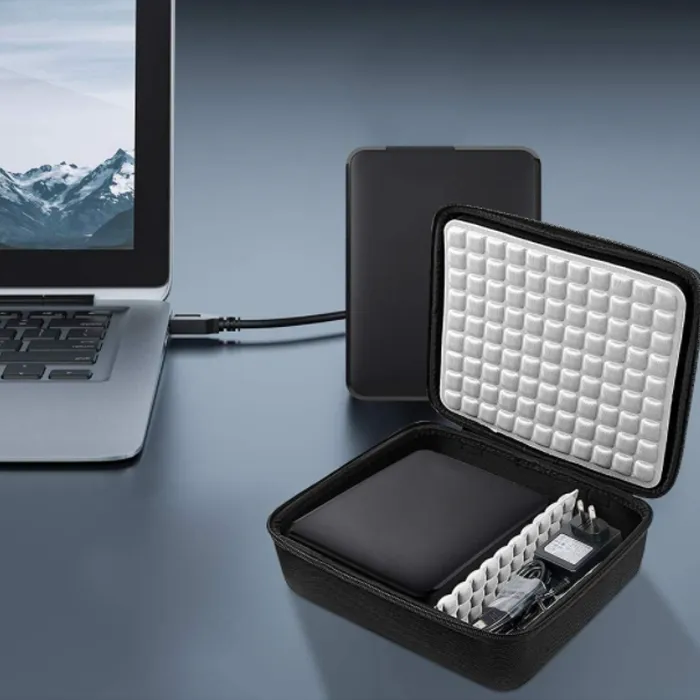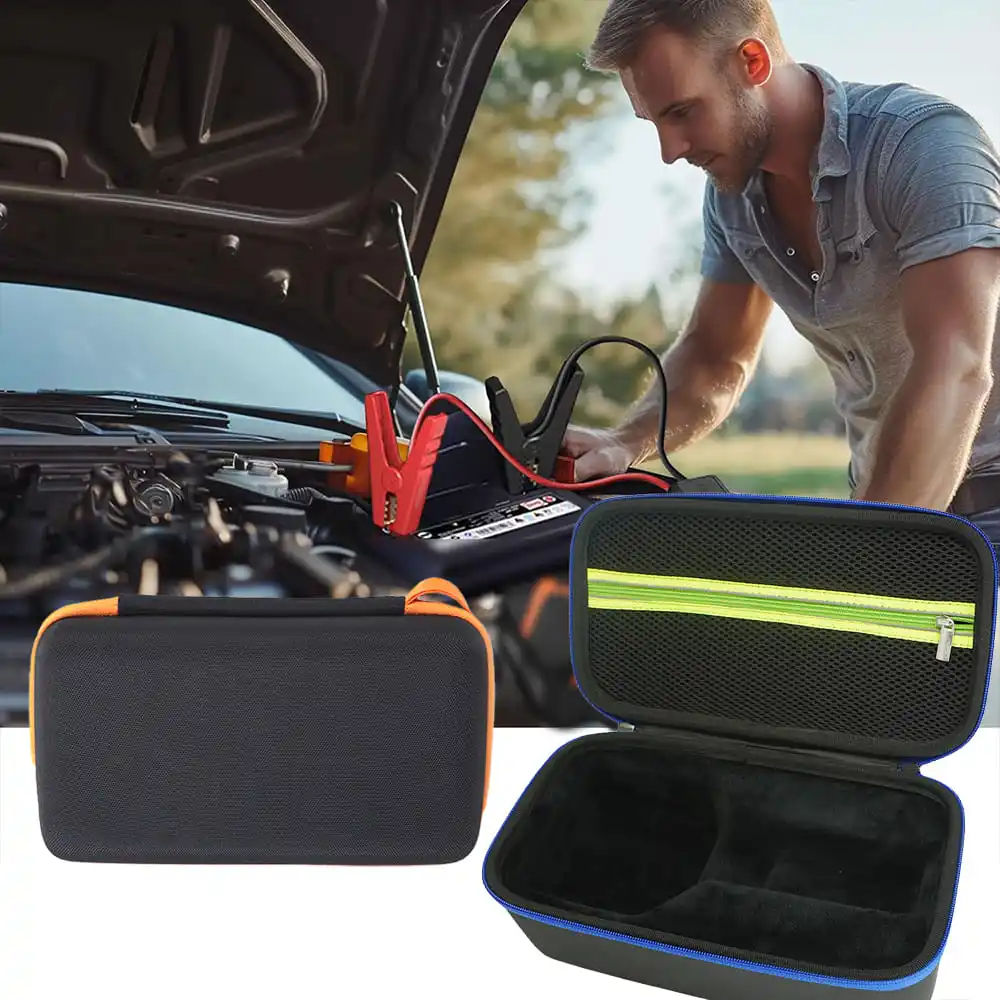Hướng Dẫn Chăm Sóc Thiết Yếu Cho Các Giải Pháp Lưu Trữ EVA
- Chị Tổ chức EVA chiếc case không chỉ đơn thuần là một giải pháp lưu trữ – mà còn là một khoản đầu tư nhằm bảo vệ và sắp xếp các vật dụng giá trị của bạn. Dù bạn sử dụng để đựng thiết bị điện tử, công cụ hay đồ dùng cá nhân, việc bảo trì đúng cách sẽ đảm bảo tuổi thọ và chức năng sử dụng lâu dài. Việc hiểu rõ các kỹ thuật làm sạch và bảo trì phù hợp sẽ giúp duy trì độ bền, hình thức bên ngoài và tính năng bảo vệ của chiếc hộp đựng EVA theo thời gian.
Các tính chất độc đáo của vật liệu Ethylene Vinyl Acetate (EVA) khiến những chiếc hộp này đặc biệt bền bỉ, nhưng chúng vẫn cần được chăm sóc đúng cách. Hướng dẫn toàn diện này sẽ hướng dẫn bạn các phương pháp bảo trì chuyên nghiệp, kỹ thuật làm sạch và chiến lược bảo quản để giữ cho hộp đựng đồ tổ chức bằng EVA của bạn luôn trong tình trạng hoàn hảo.
Quy Trình Vệ Sinh Định Kỳ
Các thủ tục bảo trì hàng ngày
Thiết lập thói quen làm sạch định kỳ là rất quan trọng để duy trì hộp đựng đồ tổ chức EVA của bạn. Bắt đầu bằng cách lấy hết nội dung ra ngoài và lau nhẹ bề mặt bên ngoài bằng một miếng vải sợi nhỏ khô để loại bỏ bụi và mảnh vụn trên bề mặt. Hãy chú ý đặc biệt đến các góc và khe hở nơi bụi bẩn có xu hướng tích tụ. Đối với các ngăn bên trong, hãy dùng bàn chải mềm để loại bỏ các hạt lỏng lẻo có thể đã lắng đọng vào các rãnh xốp.
Sau mỗi lần sử dụng, hãy kiểm tra hộp đựng EVA của bạn để phát hiện các vết bẩn hoặc dấu hiệu. Việc xử lý nhanh các vấn đề nhỏ sẽ ngăn chúng trở thành các vết ố cứng đầu sau này. Giữ hộp ở nơi sạch sẽ, khô ráo khi không sử dụng, tránh ánh nắng trực tiếp có thể ảnh hưởng đến độ bền của vật liệu theo thời gian.
Phương pháp làm sạch sâu
Khi hộp đựng EVA của bạn cần được làm sạch kỹ hơn, hãy dùng một miếng vải hơi ẩm cùng dung dịch xà phòng nhẹ. Tránh sử dụng hóa chất mạnh hoặc chất tẩy rửa mài mòn có thể làm hỏng vật liệu. Làm sạch bề mặt nhẹ nhàng theo chuyển động tròn, cẩn thận không làm ướt đẫm vật liệu. Đối với các vết bẩn stubborn, hãy pha một dung dịch từ nước rửa chén dịu nhẹ và nước ấm.
Sau khi làm sạch, hãy lau khô vỏ case kỹ lưỡng bằng một chiếc khăn sạch và để khô hoàn toàn trước khi cất giữ bất kỳ vật dụng nào bên trong. Việc này ngăn ngừa sự tích tụ độ ẩm có thể dẫn đến nấm mốc hoặc hư hại vật liệu. Nhớ làm sạch cả bề mặt ngoài lẫn bên trong, đặc biệt chú ý đến những khu vực thường xuyên chạm vào như tay cầm và dây kéo.
Kỹ Thuật Bảo Trì Nâng Cao
Các biện pháp bảo vệ
Để kéo dài tuổi thọ cho case tổ chức EVA của bạn, hãy cân nhắc sử dụng các loại chất xử lý bảo vệ phù hợp. Những chất này có thể giúp chống lại nước, vết bẩn và tác hại từ tia UV. Hãy tìm các sản phẩm bảo vệ chuyên dụng dành cho vật liệu EVA, và luôn thử sản phẩm mới trên một vùng nhỏ, ít thấy trước tiên. Thoa đều chất bảo vệ bằng vải mềm, đảm bảo thời gian khô đầy đủ giữa các lần thoa.
Việc bảo vệ định kỳ không chỉ duy trì vẻ ngoài của case mà còn giữ nguyên độ bền cấu trúc của nó. Cân nhắc thoa lại các lớp bảo vệ sau mỗi vài tháng, tùy theo tần suất sử dụng và mức độ tiếp xúc với các yếu tố môi trường.
Bảo Trì Cấu Trúc
Ngoài việc chăm sóc bề mặt, việc bảo trì các bộ phận cấu trúc của túi đựng EVA là rất cần thiết. Thường xuyên kiểm tra khóa kéo, tay cầm và cơ chế đóng mở để phát hiện dấu hiệu mài mòn. Bôi một lượng nhỏ chất bôi trơn lên khóa kéo để đảm bảo hoạt động trơn tru, tránh bị vướng hoặc kẹt. Kiểm tra đường may và mép túi xem có dấu hiệu tách rời hay mài mòn không, xử lý ngay các vấn đề nhỏ để ngăn ngừa sự cố lớn hơn.
Hãy chú ý đến các miếng đệm xốp và ngăn chứa được thiết kế riêng. Dùng máy hút bụi nhẹ nhàng làm sạch những khu vực này để loại bỏ bụi bẩn và định hình lại các phần bị nén. Nếu thấy xốp có dấu hiệu xuống cấp, hãy cân nhắc thay thế chuyên nghiệp để duy trì khả năng bảo vệ tối ưu cho các vật dụng lưu trữ.

Lưu Trữ và Cân Nhắc Môi Trường
Điều Kiện Lưu Trữ Tối Ưu
Cách bạn lưu trữ hộp tổ chức EVA ảnh hưởng đáng kể đến tuổi thọ của nó. Hãy chọn một nơi thoáng mát, khô ráo, tránh ánh nắng trực tiếp và các nguồn nhiệt. Không nên cất giữ ở những khu vực có nhiệt độ quá cao hoặc độ ẩm cao vì những điều kiện này có thể ảnh hưởng đến tính chất của vật liệu. Nếu có thể, hãy đặt hộp nằm phẳng để duy trì hình dạng và ngăn ngừa áp lực không cần thiết lên cấu trúc.
Khi cất giữ trong thời gian dài, hãy đặt một gói hút ẩm silica gel bên trong để ngăn ngừa sự tích tụ độ ẩm. Đảm bảo hộp được làm sạch hoàn toàn và khô trước khi cất giữ lâu dài, đồng thời tránh chồng các vật nặng lên trên có thể gây biến dạng.
Chiến lược Bảo vệ Môi trường
Hiểu rõ cách các yếu tố môi trường ảnh hưởng đến hộp tổ chức EVA của bạn sẽ giúp thực hiện các biện pháp bảo vệ hiệu quả. Bảo vệ hộp khỏi nhiệt độ cực đoan, vì vật liệu EVA có thể trở nên linh hoạt hơn ở nhiệt độ cao hoặc giòn hơn trong điều kiện lạnh khắc nghiệt. Khi đi du lịch, tránh để hộp trong xe hơi nơi nhiệt độ có thể thay đổi mạnh.
Hãy cân nhắc sử dụng nắp đậy chống bụi khi cất giữ hộp để tăng cường bảo vệ khỏi các tác động của môi trường. Nếu sử dụng hộp ngoài trời, hãy hạn chế tiếp xúc trực tiếp với ánh nắng mặt trời và mưa. Trường hợp hộp bị ướt, hãy làm khô hoàn toàn trước khi cất giữ để tránh hư hại vật liệu.
Các câu hỏi thường gặp
Tôi có thể sử dụng chất khử trùng trên hộp sắp xếp EVA của mình không?
Mặc dù việc khử trùng có thể cần thiết, chỉ nên dùng các chất khử trùng nhẹ, an toàn đặc biệt cho vật liệu EVA. Tránh các hóa chất mạnh hoặc chất tẩy rửa chứa cồn có thể làm hỏng bề mặt. Luôn thử bất kỳ sản phẩm làm sạch mới nào trên một khu vực nhỏ trước tiên và đảm bảo làm khô kỹ sau khi sử dụng.
Tôi nên vệ sinh hộp sắp xếp EVA của mình bao lâu một lần?
Nên thực hiện vệ sinh nhẹ sau mỗi lần sử dụng, và nên tiến hành làm sạch sâu kỹ lưỡng mỗi 1-2 tháng tùy theo tần suất sử dụng. Tăng tần suất vệ sinh nếu hộp được tiếp xúc với môi trường bẩn hoặc được sử dụng hàng ngày cho mục đích chuyên nghiệp.
Tôi nên làm gì nếu hộp sắp xếp EVA của tôi bị ướt?
Nếu vỏ case của bạn bị ướt, hãy immediately lấy toàn bộ nội dung ra ngoài và lau khô kỹ lưỡng bằng một chiếc khăn sạch, thấm hút tốt. Để case khô hoàn toàn ở nhiệt độ phòng, tránh xa các nguồn nhiệt trực tiếp. Sau khi khô, kiểm tra xem có hư hỏng do nước hay không và áp dụng các biện pháp bảo vệ phù hợp nếu cần thiết.

